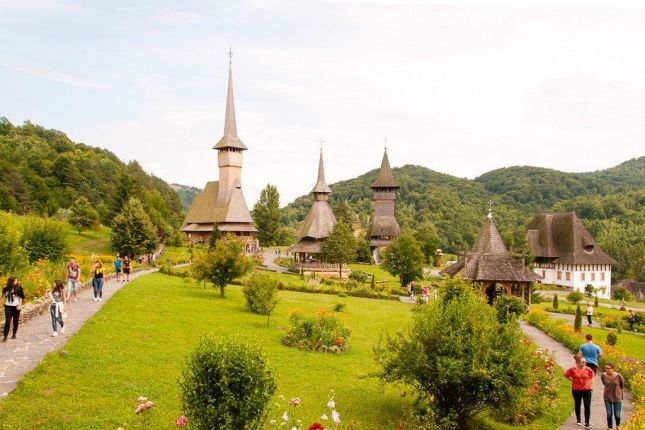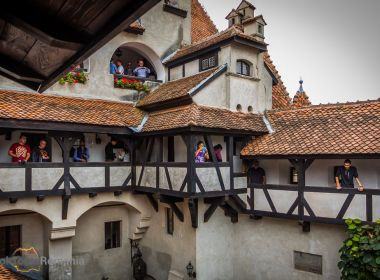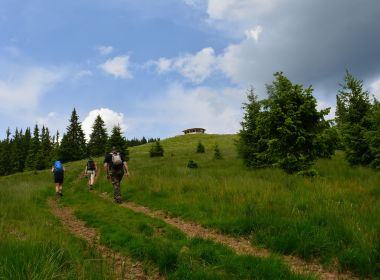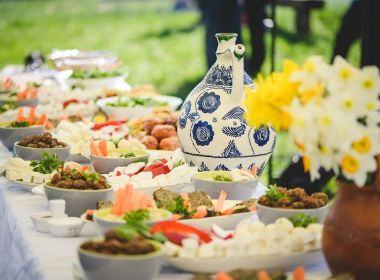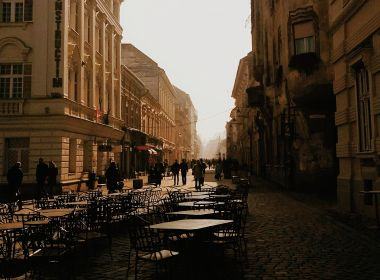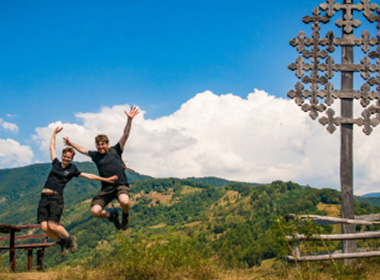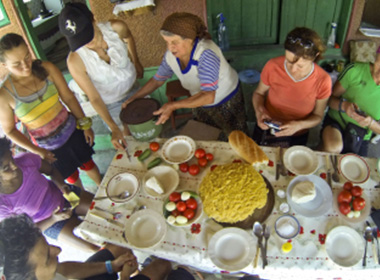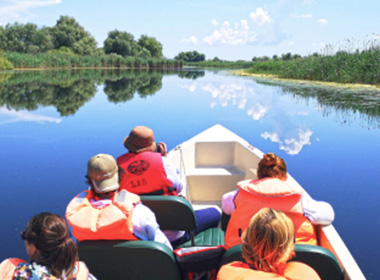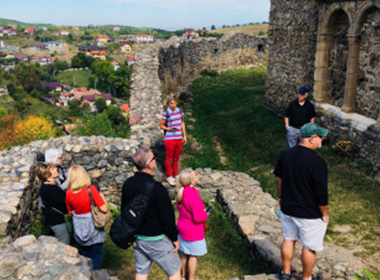Wooden Churches Maramures: UNESCO Heritage Sites
Located in the northern part of Romania, in a place typically described as one of the most peaceful, picturesque, full of tranquility and positive energy places in Romania, the wooden churches of Maramures are architectural masterpieces that reflect the best example and variety of wood carving design and craftsmanship. These churches exemplify vernacular religious wooden architecture, highlighting their exceptional artistic quality and craftsmanship.
Out of about 100 old wooden churches in Maramures, eight were included in UNESCO Heritage as a sign of recognition of their cultural significance and uniqueness.
They are located in the northern part of Romania, near the cities of Baia Mare and Sighetu Marmatiei, in the region of Maramures. The nearest airport is Cluj-Napoca. Each church is in a different village, and unfortunately, there’s no public transport between them, so you’ll need a car, or a guide, to drive you.
The Wooden Churches of Maramures are part of UNESCO heritage, are one of the most popular tourist attractions in Romania and one of the many reasons why people visit Maramures.
If you plan to visit them during Christmas in Romania expect to see locals wearing their best folk costumes and many traditional celebrations underway.
Table of contents
- History and Significance
- Architecture and Design
- Cultural Significance
- Quick overview of the eight Wooden Churches of Maramures
- 1. Wooden church of Budești Josani
- 2. St. Paraskeva wooden church of Desești
- 3. Bârsana wooden church
- 4. Wooden church of Poienile Izei
- 5. Ieud Deal wooden church
- 6. Șurdești wooden church
- 7. Plopiș wooden church
- 8. Rogoz wooden church
History and Significance
The wooden churches of the Maramures region were built between the 14th and 18th centuries when the ruling Habsburg Empire forbade the locals to build stone Orthodox churches with more durable materials. The inventive craftsmen's use of wood successfully conveyed the message of their religious beliefs over centuries.
The churches are a testament to the skill and craftsmanship of the local population, who built these structures with limited means. The churches have played a significant role in the local community, serving as centers of worship, education, and social gatherings.
Architecture and Design
Characterized by an architectural style unique to the region, combining Gothic, Orthodox, and vernacular wooden architecture elements and having reached artistic maturity across different periods, the wooden churches of Maramures are built entirely of thick logs, with tall, lean wooden towers that dominate the landscape.
What is remarkable about their shape is how the massive roofs, meant to be seen from afar by locals as a beacon, will make the main body of the church feel minuscule.
The interiors of the churches are adorned with intricate carvings and ornate decorations, including glass-painted icons and Celtic crosses. Expect each visit to be a humbling experience.
Compared to the painted monasteries of Bucovina, the decorations of the wooden churches of Maramures feel more naive, as the craft skills of each local artist had to develop in a different climate.
As they were meant to serve the villages they are surrounded by, the wooden churches of Maramures are designed to be functional, with a simple rectangular shape and a steep shingled roof. The most characteristic features of the churches are their tall, slim bell towers, often decorated with intricate carvings and ornate details.
Cultural Significance
The wooden churches of Maramures are a significant part of Romanian cultural heritage, reflecting the country’s rich history, traditions, and values. Each construction is a testament to the skill and craftsmanship of the local population, who built these structures with limited means.
Feel free to wonder at local painters' architectural solutions and artistry as they attempt to continue their traditions in a context of oppression.
Churches have played a significant role in the local community, serving as centers of worship, education, and social gatherings for the villages around them. Getting to each one can feel like a quest, but they are all worth visiting.
An essential part of Romania’s UNESCO World Heritage Sites, the Maramures wooden churches attract visitors from around the world who are interested in history, architecture, and culture. They are a unique group of constructions and outstanding examples of resistance.
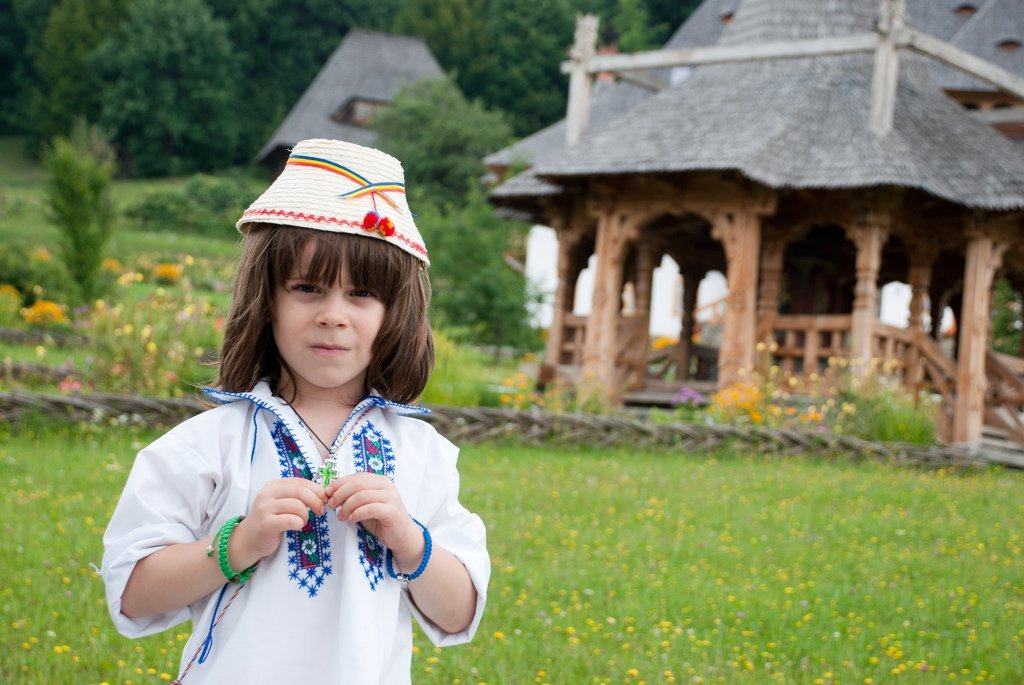
Quick overview of the eight Wooden Churches of Maramures
The eight wooden churches of Maramures are:
- The Wooden Church of Barsana, built in 1720, is one of the tallest wooden churches in Romania, standing 57 meters high. Located at the western end of the village, not to be confused with Barsana Monastery, on the eastern end.
- The Budesti Church, built in 1643, is the largest wooden church in Maramures. It measures 18m long, 8m wide, and has a 26m high tower.
- The Wooden Church of Desesti, built in 1770, is known for its sculptured decoration on the outside walls and its interior paintings, which date back to around 1780.
- The Ieud Hill Church, built in 1628, is considered one of the oldest wooden churches in Europe and is home to the codex of Ieud, an ancient writing in the Romanian language.
- The Wooden Church of Plopis, built between 1796 and 1798, combines architectural elements from Maramures and northern Transylvania and is considered one of the most integrated religious monuments in Maramures.
- The Poienile Izei Church, built in 1604, is one of the most beautiful and well-preserved wooden churches in Maramures.
- The Rogoz Church, built in 1633, is made of Ulm tree and distinguishes itself by the high number of ornaments, the southern entrance, and the unitary roof.
- The Surdesti Church, built in 1721, is renowned for having the only double-eaved roof in the Land of Chioar.
Each of the eight churches has unique characteristics, architectural style, and cultural significance, making them a must-visit destination for anyone interested in history, architecture, and culture.
So now let's take a closer look at each one of them.
1. Wooden church of Budești Josani
The wooden church built in 1643 has St. Nicholas as a patron and was considered magnificent during its era and long after. The church imposes itself through monumentality and artistic value, being the largest one in Maramures (18m long, 8m wide, and the tower 26m high).
Inside the church, you can find part of a mail shirt believed to belong to a legendary outlaw (Romanian, haiduc). Legend says the outlaw Pintea the Brave himself left his mail shirt and helmet in the church's care.
- Location: Budesti - Josani village
2. St. Paraskeva wooden church of Desești
The church, built in 1770, is patronized by the Pious Paraskeva. Its paintings date back to around 1780. They illustrate post-Byzantine influences, are well preserved, and cover the church's walls, showing classical biblical scenes (Last Judgement, Old and New Testament, the Cycle of Sin).
The representations of various nations (Jews, Turks, Tartars, Germans, and French) with their traditional garments and cultural specificities on Judgement Day are fascinating. Within the cemetery of this church, you can also find Celtic crosses.
- Location: Desesti village
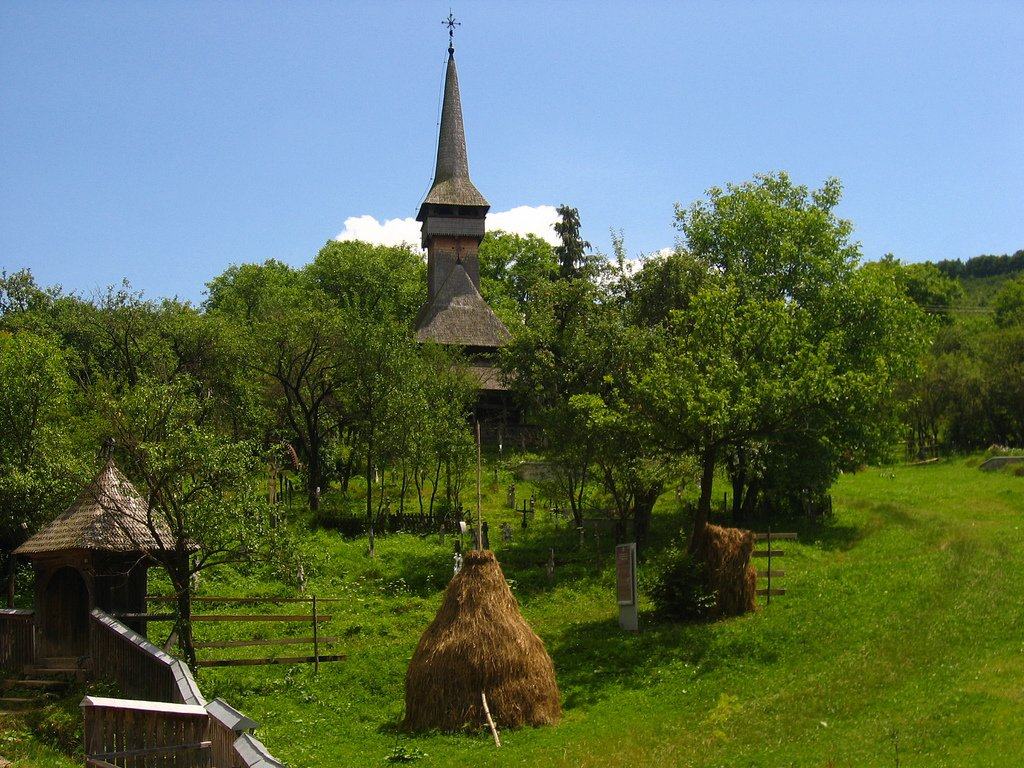
3. Bârsana wooden church
This church was built in 1720 to replace another that was burned down by tartars. Initially, the church belonged to a monastery and was moved to its current location only in 1806. According to legend, plague victims had been buried on Jbar Hill without their final rites, so the people moved the church here.
Specific to this particular church is a wooden belt sculpted with a braided rope surrounding the entire construction. The iconography is varied and encompasses Barcoo's influences.
- Location: Barsana village
4. Wooden church of Poienile Izei
This is one of the most beautiful and well-preserved wooden churches in Maramures County. Built-in 1604, it illustrates the evolution of the different types of wooden churches.
It’s a small church building, and its parietal paintings are remarkable for their ample illustrations of the Last Judgment or scenes from Genesis, like some of the punishments for the deadly sins, such as a liar hanged by his tongue.
- Location: Poienile Izei village
5. Ieud Deal wooden church
While some argue the upper church dates back to 1364, given its specific elements, architectural style, and size, it was built around 1620. The church's attic revealed an ancient document—considered the first document written in the Romanian language using Cyrillic letters — The Ieud Codix.
The codex was dated around 1391-1392, approximating the year 6900 mentioned on the manuscript's first page. The paintings of the church were made in 1782 and illustrated Judgement Day, The Holy Trinity, and The Old and the New Testament.
- Location: Ieud Deal village
6. Șurdești wooden church
The church, also known as the Church of the Holy Archangels, was built in 1721 for the village's Greek-Catholic community.
The interior painting dates back to 1783, and the church distinguishes itself by the impressive dimensions of the massive roof. A tower (54 m) is built over the entrance, totaling 72m.
Another particularity of this church is the stone floor, beautifully decorated royal doors, and some wooden painted icons and old stone-carved crosses in the cemetery.
- Location: Surdesti village
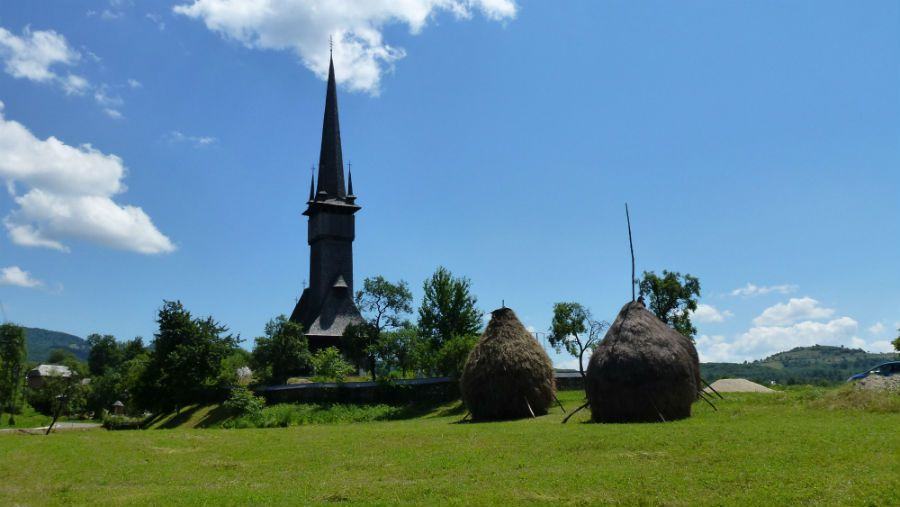
7. Plopiș wooden church
The church was built between 1796 and 1798, and at that time, 49 families lived in the village. The cost of building the church was 49 gold coins, split evenly among the village families.
The 47m high construction harmoniously combines two different styles, the Maramures style (visible in the other wooden churches) and the Northern Transylvanian style.
Two wooden carved belts surround the church, and the entrance is made through beautifully sculpted doors.
The traditional interior, painted to illustrate scenes from The Judgement Day, _Holy Trinity,_ and Cycle of Sins, has been preserved only on the roof. The church, which houses an ancient wooden cross and two valuable prayer books, is still the only church in the village today and welcomes all confessions.
- Location: Plopis village
8. Rogoz wooden church
This church was built in 1663 to replace an older church burned down during the Tatar invasion. It distinguishes itself by the high number of ornaments, the southern entrance, and the large and asymmetrical roof. The church still has a well-preserved painting and a wooden chandelier.
You can find the Wise Men table outside the church—the church's roof was extended to cover this table. The table is split into several areas for each of the wealthy families of the village, and their names are painted on the church's wall.
This is where the eldest of the town used to debate community matters, and around Easter, the wealthy families would donate to the poor.
- Location: Rogoz village
Coming to Romania to visit Wooden Churches of Maramures? Don't forget to check the most appreciated tours from our website:
Places to visit
Related tours
-
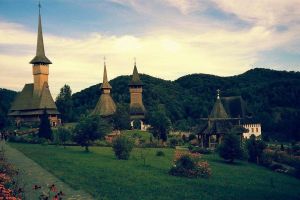
2-day Best of Maramures Tour
Start from: Cluj-Napoca
-
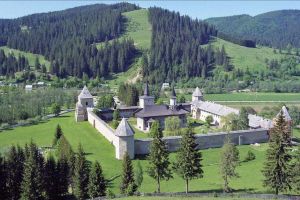
Complete tour of Maramures & Bucovina
Start from: Cluj-Napoca
-
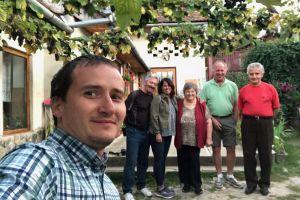
10-Day Best of Romania Group Tour
Start from: Bucharest
4 times a year we prepare a newsletter with local stories, places and our special insights about Romanian culture and local life that will inspire you to visit our country and have an authentic local experience. Would you like to get it?
